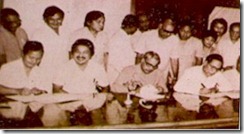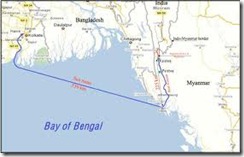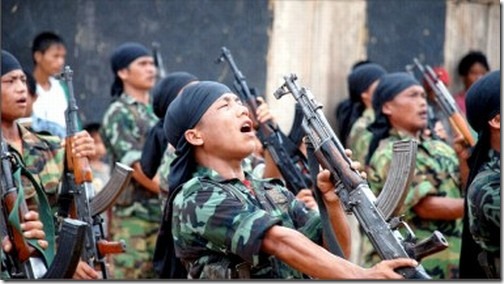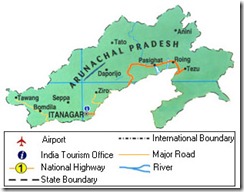By Shekhar Gupta
 As anniversaries go, Rajiv Gandhi’s 67th would not sound particularly extraordinary, in some sort of commemorative terms, not like a 25th, 50th, 60th, 75th or 100th. But it should remind us of another important anniversary connected with him this year, or rather a triple anniversary. This, 2010, is also the 25th anniversary of the peace accords he signed in Punjab, Assam and Mizoram (which was signed in1986 but sealed a year earlier). Each of these, even the accord with Sant Longowal in Punjab that seemed to falter within weeks of the signing, contributed ultimately to resolving one of the our most serious threats since the formation of the republic.
As anniversaries go, Rajiv Gandhi’s 67th would not sound particularly extraordinary, in some sort of commemorative terms, not like a 25th, 50th, 60th, 75th or 100th. But it should remind us of another important anniversary connected with him this year, or rather a triple anniversary. This, 2010, is also the 25th anniversary of the peace accords he signed in Punjab, Assam and Mizoram (which was signed in1986 but sealed a year earlier). Each of these, even the accord with Sant Longowal in Punjab that seemed to falter within weeks of the signing, contributed ultimately to resolving one of the our most serious threats since the formation of the republic.
It is fascinating, therefore, that even when Rajiv Gandhi’s own partymen count his achievements and contributions today they talk about computers, telecom, his Bombay AICC speech, even Navodaya Vidyalayas. But they forget these three accords which deserve to be listed among the most important (and positive) turning points in any history of modern India. We can only guess why it is so. It could be because these came in the very early part of his tenure. But it could also be because of another complex reason: that all the people he settled these disputes with were political adversaries of his party and, remain so, to date. That is why each one of these was an even more remarkable achievement.
I was reminded of this earlier this afternoon while chatting with Assam opposition leader, and twice chief minister, Praful Mahanta (interview on NDTV’s Walk the Talk on Saturday, 9.30 pm). I knew Mahanta as an idealistic leader of the All Assam Students Union (AASU) and have followed him, mostly from distant Delhi, through his many ups and downs through his less idealistic political evolution. But it is only that I got an interesting, one-line answer to the question: so why did you sign that accord with Rajiv Gandhi after having fought his mother so bitterly? “Because he was young like us,” said Mahanta, whose English has improved over the years as my Assamese has, regrettably, declined and then added: “And also because he was the first Congress leader willing to go beyond his party’s line.”
If you study these three accords it is that one factor, Rajiv’s willingness to go beyond the party line, that underlines the refreshing new change he had brought to our politics and that fired the imagination of India so brilliantly in the early part of his prime ministership.
It’s ironical though that while the same honesty marked his Bombay AICC speech, it is his party that not only failed to respond to a leader with a message of change but closed ranks to throttle him. An eye-opener for me was the December 1985 election that followed the accord and installed a government of former rebels, led by Mahanta in power replacing the Congress’s Hiteswar Saikia. The most popular slogan in that campaign was: “Congress party murdabad, Rajiv Gandhi zindabad.”
Following each one of these accords, even as his party was losing, India was winning. If you go back to when Rajiv was elected, the assassination of his mother and the massacre of Sikhs was less than seven weeks old and Operation Bluestar less than six months. Nobody had then imagined that any Akali leader would bury the hatchet with the Congress, and even more importantly, with Indira’s son. How Rajiv managed to persuade Sant Longowal, then detained in a government guesthouse in Udaipur, must be a fascinating inside story that, I suspect, only Arjun Singh (who was appointed a very young governor of Punjab with the responsibility of implementing the peace) can tell. But I do know how angry Longowal had been till April of that year when I went for a “clandestine” interview, smuggled into his Udaipur detention home through the good offices of Delhi’s Sikh businessman-Akali leader Amarjit Singh Sarna. He said he would answer my questions only because he knew I had been “brave enough” to stay on in Amritsar during Operation Bluestar and had now taken the risk to come illegally to meet him. But he would only give me answers in writing so he couldn’t be misquoted. He scribbled his answers in Gurmukhi in the little notebook I had slipped in my hip-pocket. His answer to the question, on whether there could ever be peace between the Sikhs and “Delhi” was: “How can you even think about it, when bodies of innocent Sikhs are hanging on every tree along the GT Road between Delhi and Amritsar.” Just three months later, he had signed a peace settlement, knowing the risks. “Rajiv,” he said, “was very different. Very young, very sincere, not like other Congress people.” Rajiv worked with him on the tack of patriotism, convincing him that he and Longowal were patriotic Indians first. Their party politics came second.
But Rajiv picked Mizoram early enough for settlement as it was one of the two most active insurgencies, and unlike the other one in Nagaland, had a clear leadership. The price again was loss of power for his party. He embraced Laldenga, for two decades probably the most wanted man in India, and against whom his mother had unleashed IAF fighters in 1966, and while their parties fought each other in the election that followed, there was nothing but warmth between the two of them.
In the course of that election campaign, in the backyard of an MNF candidate’s home in Aizawl, I met an attractive young woman, Vanlalzari. She was a bit of a cult figure among the Mizos. As personal secretary of the IGP G.S. Arya, she had been sentenced to imprisonment for complicity in the most sensational rebel raid in the police headquarters (January 13, 1975) in which Arya, his DIG L.B Sewa and intelligence chief Panchapagesan were killed. From the prison, she wrote her own rebellious memoirs, The Zari Diary, which was like an illicit local bestseller and English translations of which all intelligence officers used to pore over. She had now been freed in the post-accord amnesty. She talked about her days in jail without remorse, while playing with her baby, counting posters of her candidate and stacking them in neat packets of a hundred apiece. Did she miss her cause of sovereignty? “Well, I will tell you what Pu Laldenga said to us. He said, Rajiv told him, what you Mizos want is power. You can’t get it no matter how many guns you have, how many Indians you kill. But come back to your people, and if they give you what they sometimes give my party, or Brig Sailo’s, it’s all yours. And that’s more than you can have while hiding in Burma. We trust our leader.”
Mizoram, in these 25 years, has become probably the most peaceful state in all of India and you see representatives of its brilliantly talented and very tiny population (less than a million) doing so well in the mainstream. One, a former cop, even won a Lok Sabha election in Bangalore on a BJP ticket. Punjab has buried the ghost of terror and anger a long time back. In Assam, Mahanta, now out of power, survived a near thing when ULFA tried to kill him for fighting them as no Congressman has done, and speaks so warmly of Rajiv. And in each one of these states, the AGP, MNF and the Akalis have lost and won power more than once since. What Rajiv taught us, in his very first year, therefore, is the generous power of Indian democracy, if you were willing to rise above narrow party interests. That, to someone like me who reported on that dangerous decade, is a contribution much greater than computerisation and the rest.
 Aizawl, Aug 28 : Anti-corruption watchdog 'Prism' today claimed to have unearthed a scam in the compensation for landowners displaced due to construction of ONGC-funded Meidum-Hortoki road in Kolasib district.
Aizawl, Aug 28 : Anti-corruption watchdog 'Prism' today claimed to have unearthed a scam in the compensation for landowners displaced due to construction of ONGC-funded Meidum-Hortoki road in Kolasib district.












 Armed cadres of KNF(S) at the opening of their camp
Armed cadres of KNF(S) at the opening of their camp 


